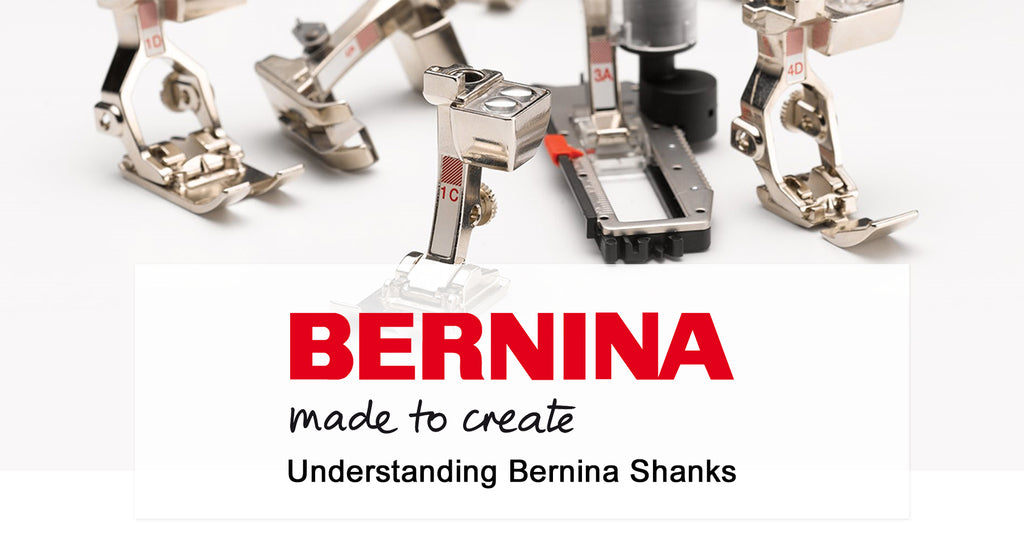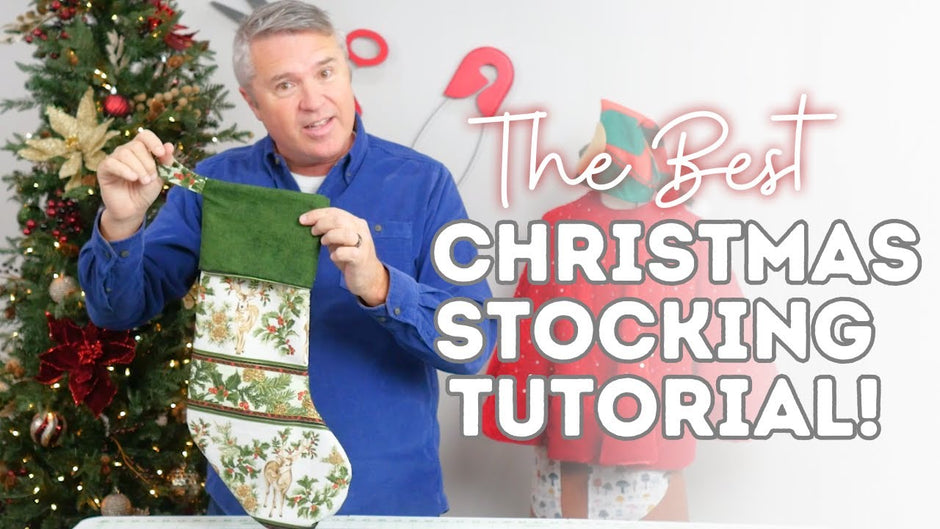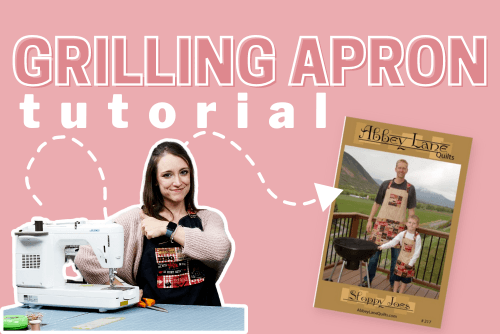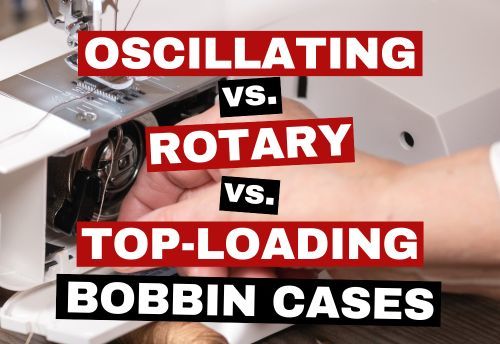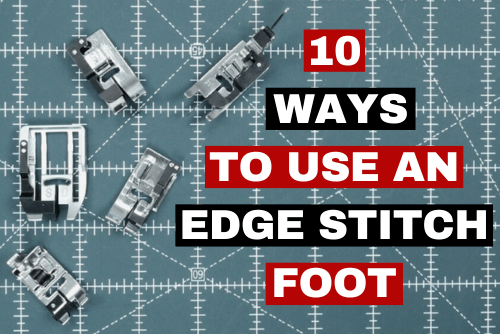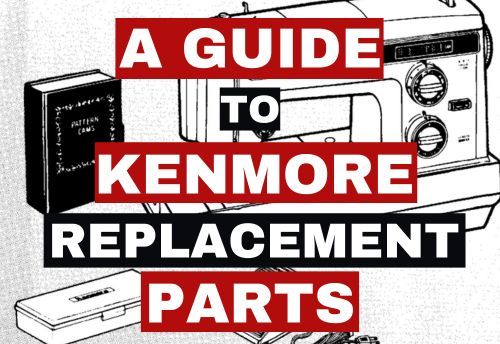
Bernina sewing machines are not your average machine when it comes to presser feet. Normally when picking out a new foot, you simply have to worry about High Shank, Low Shank, Slant Shank, or Snap-On. Bernina decided to develop their own shank systems that are not compatible with any other brand of machine.

Old Style Bernina Feet - Manufactured between 1954 and 1998
Bernina started producing the 530 Record in 1954, this is the first model that had what we call old style feet. The top of the shank has a rounded back and there is no cut-out (see figure A). In the early days of old style feet, the foot number was actually stamped into the metal of the shank. Eventually, Bernina started putting the numbers on a white sticker with black lettering on the front of the shank. During the production of old style feet machines, Bernina increased the stitch width of these machines from 4.5mm (ie-930s) to 5.5mm (ie-1001). There are some incarnations in-between as well including the optical feet. Wherever possible, they tried to make their Bernina presser feet backward compatible. Tweaks were made to the shank design to ensure that you could not accidentally put 4.5mm wide foot on a 5.5mm machine.

New Style Feet - Manufactured After 1996
New style Bernina presser feet have red lines on the sticker and the foot number is also red, unlike the old style Bernina feet that are black. The top of the shank is squared off and has a notch cut out on the top back of the shank (See figure B). These feet are between 5.5mm and 9mm for the stitch width. Since Bernina increased the cone size on the new style feet, you can't put the wrong size foot on your machine. You may now be wondering how to tell if a specific foot is for the 5.5mm or the 9mm machines? Bernina solved this by numbering their presser feet and adding one or two additional versions with a letter that follows the number, such as Edgestitch Foot #10C.



Using Standard Low Shank Feet
There are 2 different adaptors available that will allow you to use standard low shank presser feet and snap on feet. Some people prefer this method instead of forking out $20-$50 per Bernina presser foot. If you have other sewing machines, it may make sense financially to invest in more low shank or snap on feet that you can take from machine to machine. If you decide to go this route, I just want to remind you that if your machine uses the presser feet with the sensors, these adaptors will not trigger those sensors.




